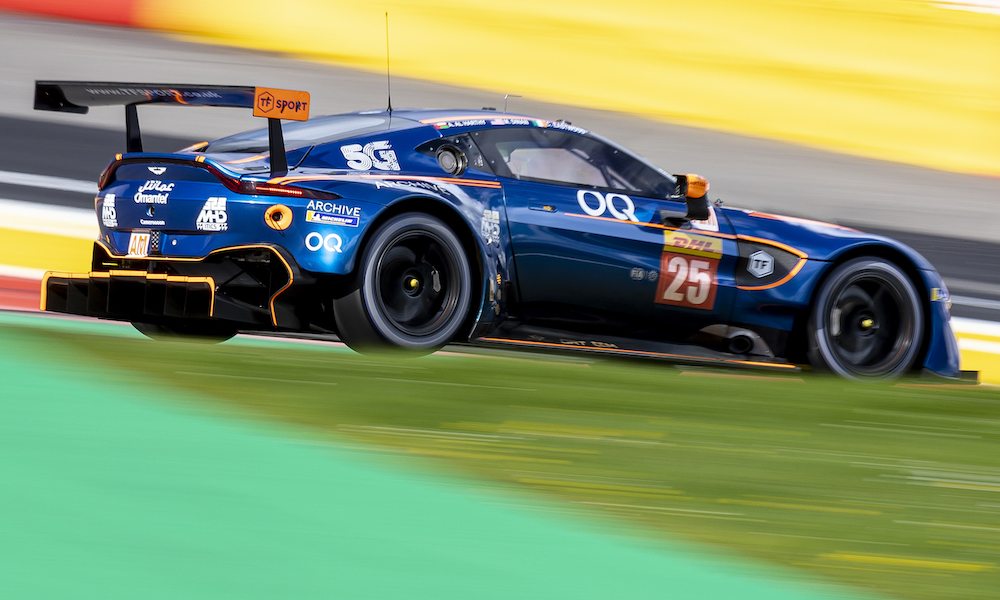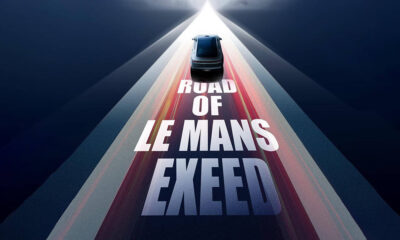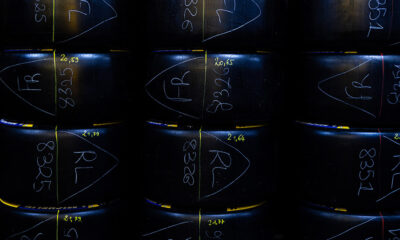Aston Martin Racing is hoping to secure places on next year’s FIA World Endurance Championship LMGT3 grid despite the idea to give Hypercar manufacturers priority.
The British marque has been active in the WEC GTE ranks since the inaugural 2012 season but is the only active manufacturer without a program in the top prototype class.
WEC CEO Frederic Lequien told reporters at Portimao last month that the championship is considering to prioritize LMGT3 entries for manufacturers that are in Hypercar.
Each approved LMGT3 manufacturer is then set to be given two entries that it can allocate to teams.
Lequien also stated that the WEC “must take into consideration” cases like Aston Martin’s but that grid space will be at a premium as Hypercar continues to expand.
Aston Martin had plans to develop a non-hybrid LMH prototype based on the Valkyrie, but the program was shelved in early 2020. It ran a factory GTE-Pro effort until the end of the 2019-20 season, after which it focused on supporting customers in GTE-Am.
“I think it’s an understandable approach that the ACO are taking,” Aston Martin Racing’s head of partner racing Huw Tasker told Sportscar365.
“I actually think limiting the entries to two cars per manufacturer to allow more manufacturers on the grid is good for the championship.
“We’ve been in WEC from the start and enjoyed the racing here, being here in Pro and with customer cars. We would hope, like the ACO indicated, that loyalty to the championship is also an important factor, even if Hypercar entries get the first priority.
“I think it’s hard for them to give any concrete answers at the moment.
“They need to know the number of Hypercars they’ve got, and there’s a limit to the number of cars they can get on the grid. But I think they’re open to that line of thinking.”
Based on current estimations, Hypercar is likely to have around 20 entries next season, while the anticipated removal of LMP2 from the WEC would leave space for eight or nine LMGT3 manufacturers on a 36-car grid.
The availability of additional LMGT3 brands such as Aston Martin, Audi, Ford, Mercedes-AMG and McLaren would then depend on how many of the six Hypercar manufacturers with FIA-homologated GT3 cars commit to the new class.
Tasker suggested that Aston would have more demand than the two grid slots it might receive, but it would be too early to say whether a single team would be preferred over two different teams.
There are currently three Aston Martins on the GTE-Am grid: two for reigning class champion TF Sport and one for The Heart of Racing under the NorthWest AMR banner.
“It’s a theoretical challenge at the moment, until we get the entries,” said Tasker.
“We want to build the strongest program that we’ve got from the partners that we’ve got.
“No decisions have been made as to how that would work and who would get the entries.
“The championship is getting longer as well, which invariably increases the cost of it.
“You have to find teams and customers that want to race at that level. For sure we could fill more than two grid slots.”
Two-Car Allocation Presents “Brand-New” Situation
The plan to limit each LMGT3 manufacturer to two entries and give them responsibility for how those entries are distributed presents a “brand-new” situation, according to Porsche Motorsport boss Thomas Laudenbach.
Like Aston Martin and Ferrari, the German manufacturer has more than two cars on the current GTE-Am grid and is therefore set to slim down its number of entries in the production-based ranks when the two-car rule comes into effect.
Laudenbach urged that it would be impossible for Porsche to run factory entries in LMGT3 and that it would apply its usual approach of customer-led GT3 racing.
“We find ourselves now in a situation that we haven’t been in,” he said.
“If you do a factory team, it’s easy: give me the two entries and I come with a factory team. If you do customer sport, we never give entries to teams. It’s the first time.
“We already sat together and said, ‘OK, we want to be fair’ because there are probably more customers wanting to do it than we have entries. We have clear criteria [for] how we choose them.
“That’s a brand-new situation. We, as a manufacturer, [being] given entries for a racing series.
“We don’t have a preference. We try to look for the fairest way we can find. If you have 10 teams and only have two entries, this will not be [decided] by, ‘I like this guy.’
“This will be by clear criteria to be 100 percent fair.”

























